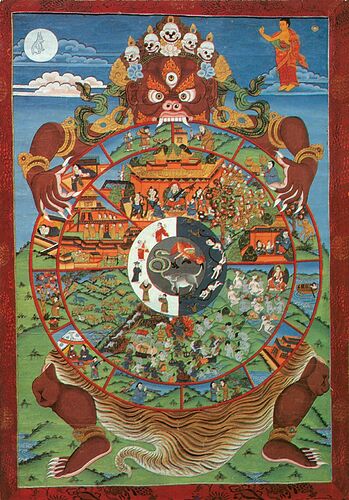The nature of consciousness is one of the most fundamental questions of human existence, if not the most fundamental one. What’s known as ‘the mind-body problem’ has intrigued and frustrated philosophers and scientists since the start of recorded history. Is the mind part of the body, or is the body part of the mind? Whilst we know that the body is made of organic matter, what about the mind? Is it made of different stuff? What is the mind? Questions, questions, questions.
As always the ancient Greeks had much to say about it: Plato took the view that the soul is separate from the body and is immortal (note: ‘soul’ and ‘mind’ are interchangable terms used by early philosophers). Plato came to this conclusion because he thought that things like ethics and mathematics couldn’t possibly come from the bodily senses and therefore ‘knowledge’ must be a separate entity. Aristotle, on the otherhand, believed that since the body is a part of nature then the mind must be as well. Function and form were key and Aristotle saw the mind as structured matter and not some spirit floating around in the ether. The only thing that Plato and Aristotle broadly agreed on was that our capacity for reasoning sets us apart from the other animals, and that the soul is a definite entity, immortal or otherwise, and consists of three tiers: appetite, perception and intellect. Talking of which, Plato famously wanted to throw poets out of the Greek Republic.
This ancient Greek take on the soul held sway for many centuries and was adopted by early Christianity. It was first seriously challenged by Rene Descartes, the 17th century French philosopher. Descartes believed that Greek metaphysics was a load of tosh and instead posited that there were two quite separate entities: ‘material substance’ and ‘thinking substance’. His seminal work was The Meditations, which is still required reading for anyone studying philosophy. Descartes begins by doubting everything; ie, what in your existence can you be sure of with certainty? Think about that. In The Meditations he comes to the conclusion that the only thing he can be certain of is his own mind; everything else, including the body, could be trickery or illusion/dreams (hence the famous quote: Je pense donc je suis, I think therefore I am). Descartes then asks himself the pertinent question: what is the mind? He came up with the ‘thinking substance’. Descartes was the first major philosopher to clearly differentiate the physical from the mental. If you like fancy lingo, Descartes’ mind-body separation is known as Cartesian Dualism.
Descartes was a scientist as well as a philosopher and as such he took theology out of the mind-body debate. However, this still left the intimate relationship between mind and body: how can something mental interact with something physical? How can an ethereal thought make your physical body do something? Now think to yourself: “I’m going to raise my arm”, and voila! up it goes. What’s going on there? This issue was addressed by Spinoza, a 17th century Dutch philosopher, who claimed that there was only one huge, determined substance in the Universe, and it could be seen as either a complete causual physical system or as a complete causual mental system. Confused…? You will be! Spinoza’s view was that a person consisted of a physical body and their mind was a correalate of all that physicality. In otherwords, ‘thought’ was not a separate entity but was embodied. This caused grave concerns for the Bible bashers of the day, whose main tenant was the soul and immortality and a place called Heaven. Spinoza was a theologian and his claim that the Universe is one entire thing, and you can call it either God or Nature, caused him to be expelled from the Jewish community in Holland. In later centuries philosophers like William James and Bertrand Russell still subscribed to Spinoza’s view, that existence comprised of just one kind of ‘stuff’, and instead of Descarte’s substance dualism it was more a case of property dualism; ie, the one kind of ‘stuff’ has two different properties, the physical and the mental. William Barclay also went along with the one kind of stuff view, although he believed that the substance was entirely mental. No wonder so many of these philosophers went mad.

 ) - to the pressure of the anomalies - particularly the double-slit results, constantly re-confirmed by replicable experiment, yet completely inexplicable under current materialist orthodoxy…
) - to the pressure of the anomalies - particularly the double-slit results, constantly re-confirmed by replicable experiment, yet completely inexplicable under current materialist orthodoxy…




